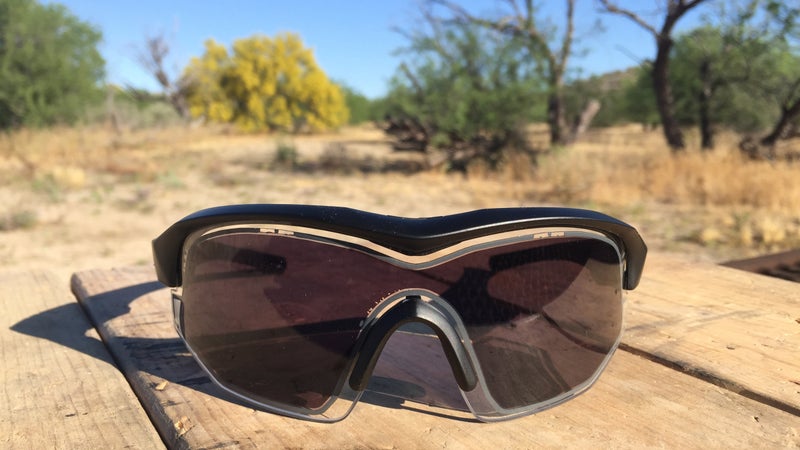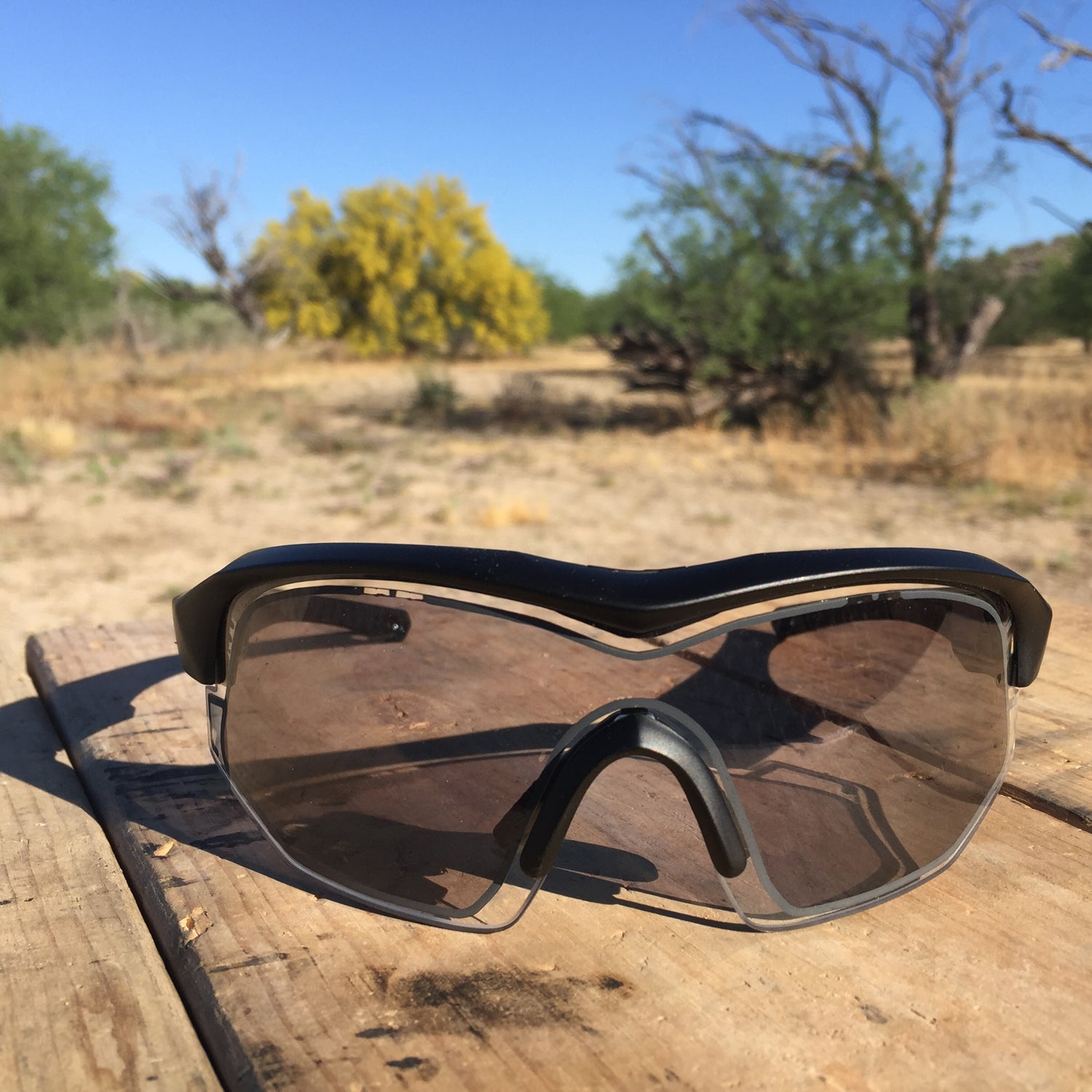Photochromic lenses, which darken and lighten based on available light, have been around for years and I love them—mostly. They are an excellent alternative to cumbersome interchangeable-lens systems, but the major drawback has been slow transitions that can leave you blind as you wait for the lenses to adjust.
Uvex, which already made some of the best transition lenses on the market, has solved this problem with its . These cycling shades use e-tint technology, which allows the lenses to instantly toggle between 16- and 64-percent light transmission with the press of a button.
The shift comes courtesy of a thin, liquid crystal film sandwiched between two polycarbonate lenses. With the input of a low-voltage electrical current, by way of a built-in battery, the crystals in the film shift position to block more or less light. Ohio-based AlphaMicron developed the system for military use, and Uvex subsequently licensed the technology for its shades.

A micro-USB port is located directly behind the power button for charging. The lithium-ion battery takes only a few hours to fully charge and is said to last for up to 50 hours. However, since the battery trickles when the lenses are darkened, it’s important to store them in their “clear” mode. I made the mistake of leaving the glasses dark after a ride one evening and came back to find them dead (and light) the next morning.
If you’re like us, you’re probably thinking batteries and electronics in a pair of shades will make them heavy, unwieldy, and totally dorky. But the lithium-ion battery fits inside a very trim temple and the rubberized, match-head size toggle switch is barely noticeable. Overall, the Variotronic S glasses look like any other wrap-style fitness shields on the market. There’s also a full-frame version (the ). And, truthfully, the orange-and-white colorways of both are good looking (in a German sort of way).
All of this might sound a bit ridiculous and RoboCop, but after a few months of riding in the Variotronics, they are the only shades I find myself reaching for. In early morning or late afternoon, photochromic lenses are optimal because they mean you won’t get caught with glasses for the wrong light. And the ability to toggle between lenses instantaneously—Uvex says 1/10th of a second, though I have no way of verifying that except to say it’s immediate—means that going in and out of tunnels (road) or dark woods (MTB) is safer and easier than ever.
The Variotronics are not perfect. For one, I’d prefer it if the lenses dropped all the way to zero percent light transmission (rather than 16). As it is, they are useable after dark, but not ideal. If they went to full clear, you could even ride in them at night. The optimal scenario would be to have a three-stage transition, with the existing two light settings plus a third, zero-tint option.
Also, the lenses are polarized, so clouds, water, and other reflective surfaces render in a strange, 3-D sort of way. It can be distracting while riding, and I’d frankly rather Uvex just drop the polarization, which isn't so necessary for cyclists.
There’s also the hassle of having to charge your glasses (and the nuisance of dead lenses in case you leave them on). This can be problematic, but it’s also true that the convenience of basically wearing two sets of glasses in one may outweigh the inconvenience.
The bottom line? I’ve happily worn photochromic lenses for years but always wished that there were a way to make the transition faster. Uvex has answered that wish, and the result is the most advanced glasses on the market—both in terms of technology and performance. At $350, the price of entry is steep. But I’m sure the technology will continue to advance, with longer battery life and varying light transmissions, and the prices will drop. If you want a pair of do-it-all glasses that are light, rugged, and have built-in dual-tint lenses today, there’s simply nothing out there like the Variotronics.


